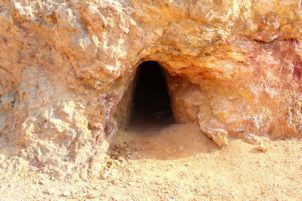
By V’cenza Cirefice and EnvJustice.
Mining last took place in Mathiatis – in the Troodos mountain range in Cyprus – during the military occupation by the British. But now mining is back.
Mathiatis, a Cypriot village nestled in the foothills of the Troodos mountain range, is entangled in a fierce fight for identity, community and nature.
For the past year it is threatened, as Hellenic Copper Mines (HCM) seeks to reopen an ancient mine to extract gold. The reopening of the mine would have major environmental, cultural and health impacts.
Citizen groups such as the Historical and Environmental Protection Group of Mathiatis are fighting back. They have written letters, organised demonstrations and have been in and out of parliament to plead their case. They have organised tours of the area with geologists and archaeologists to help local people understand what is at stake.
Bird species
At first, the community convinced the Department of Antiquities that risk to archaeological evidence was too large. But now they face a second challenge as HCM has reapplied for a new license.
The ancient South Mathiatis site was first used as a copper mine in 600 BC. Between 1935 and 1945, when the country was under British occupation, the Cyprus Mines Corporation (CMC) used the military backing by the occupiers to turn it into a gold mine.
The British Colonial period resulted in horrific conditions and many deaths for Cypriot workers. While the occupation ended a lifetime ago, its legacy still exists today.
The laws still writes that companies don’t need to rehabilitate the environment around the mine. The island, scarred by the conflict of 1974, is divided. This leaves Cyprus open to exploitation by private companies. Already twenty-five potential mining sites have been identified around the island.
The wildlife that over time has had the chance to reestablish would be disrupted. The area around the mine is forested by pine trees that house rare bird species such as the Hoopoe.
Ochre landscape
In the ancient galleries, three species of endangered bats are nested. They are protected by European law. If trucks would start transporting ore from Mathiatis to the gold processing plant in Skouriotissa, both human and animal life would be affected.
Air pollution caused by large scale excavation work would have a huge impact on the health of the local population. The region already suffers from severe dust clouds.
Further pollution would affect the cultivation of the land in this largely pastoral area. The area faces increasing desertification and the original proposal of HCM to cut 2,000 trees was therefore alarming.
The environmental and health damages from the reopening of the mine are obvious. But there are other, less quantifiable but equally important consequences. In this region, the culture of the people is closely tied to the landscape.
Only 2km from the village, the South Mathiatis Mine or “Strongylos Mine” appears as an open pit in the vibrant orange, umber and ochre landscape.
Promises of jobs
However, it is an area full of archaeologically significant sites with evidence of ancient mining dating back to 600 BC. It is a proposed site in the tentative list of UNESCO World Heritage Monuments in the category of Natural and Cultural Landscape.
Geologically, the 90-million-year-old fragment of oceanic crust draws visitors and scientists from all over the world. Archaeologically rare artefacts unique to the eastern Mediterranean were discovered and the community of Mathiatis is listed among the first on travellers’ maps for importance linked to mining activity.
The community’s combat has been marked by both victories and setbacks. Currently, the new proposal of HCM seeks to extract gold from the surrounding waste dumps from previous mining activity.
The company argues that this will clean up the area, doing the government and the environment a favor.
Members of the community see past the company’s arguments and their promises of jobs, prosperity and a new football field. Some, like Thea Christoforou, highlighted that the community would get an insignificant amount of the profits.
Ecological wellbeing
There’s a law that states that the government would only gain one percent of the company’s profits. From this the community gets only 0.4 percent.
But there’s more to this than money. The community doesn’t only oppose the mine, they also try to redefine and reclaim the vision of development co-opted by Hellenic Copper Mines and the government.
Instead of extraction and destruction of the local ecosystem in pursuit of profit for the few, they demand the sharing and caring of their commons.
Evi Charalambous, a key member of the local resistance, emphasizes this could also translate into educational and eco-tourism that seeks to combine the nature and heritage of the area.
Female activists
The groups represent two of the many citizens led initiatives on the Island that challenge the government’s view of “development” and demand that the community and ecological wellbeing come first.
They are part of a struggle against a wider problem in Cyprus where neoliberal policies sell off coastal areas and destruct protected areas.
As Myrto Skouroupathi from Young Friends of the Earth Cyprus said: “By extending solidarity to other affected communities, those in Mathiatis are helping to turn the tide as a wave of grassroots activism sweeps Cyprus”.
It is no coincidence that Myrto, Evi and Thea are all women. It is often women who start the resistance in case of an attack that threatens the community. This is also the case in Cyprus, where strong female activists led the way in the struggle for environmental justice.
This Author
V’cenza Cirefice is an activist with Young Friends of the Earth Ireland and Young Friends of the Earth Cyprus who has a special interest in issues gender and environmental justice.
This article was first published at The Ecologist: https://theecologist.org/2018/oct/23/women-who-keep-gold-ground

The project ENVJUSTICE has received funding from the European Research Council (ERC) under the European Union’s Horizon 2020 research and innovation programme (grant agreement No. 695446)